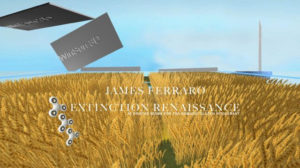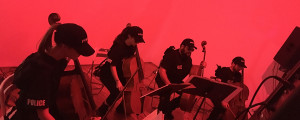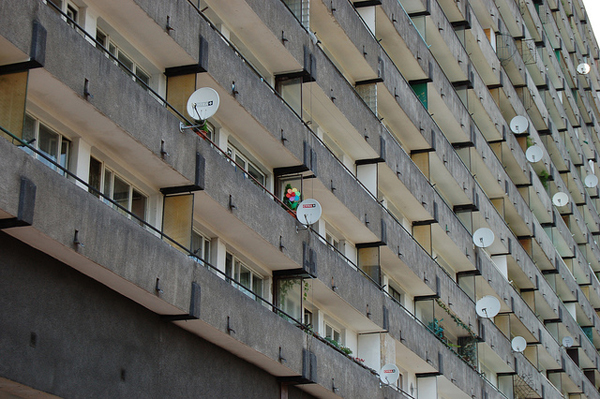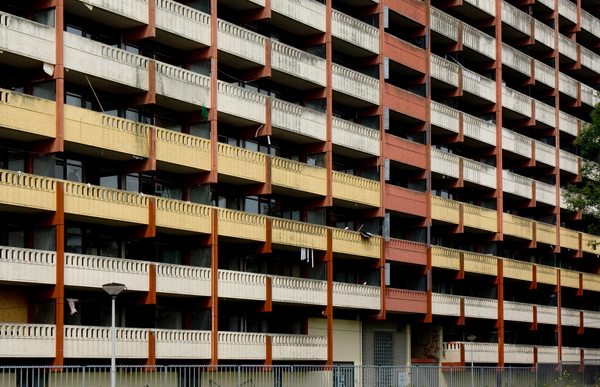The heady buzz of Los Angeles’ fair weekend attracted a healthy crop of gallerists, artists, indie rock musicians, tumblr fans and European collectors to the front gallery of Château Shatto with Jean Baudrillard’s photography still adorning the walls. As this is the time when most of the contemporary art world descends on Los Angeles for Paramount Ranch and the more blue chip Art Los Angeles Contemporary, the evening crowd is chatty and especially eager to blow off some steam once Nguzunguzu takes over the basement with a night-long DJ set. A performance like James Ferraro’s ‘Burning Prius’ within such a trafficked weekend presents a kind of intervention. It’s the work of someone whose predominant medium has recently been the hypercapitalist detritus of West Hollywood, Mid-Wilshire and Santa Monica; places dubbed the ‘Miracle Mile’, that refer to pets as “companions” and characterize an evangelical gratitude to Lifestyle with slogans such as “Fortunate People in a Fortunate City”. The impulse to play on these signifiers is irresistible, and have been plucked before as elements of other LA-focused performances including Steven Warwick’s REENGINEERING VILLA AURORA.
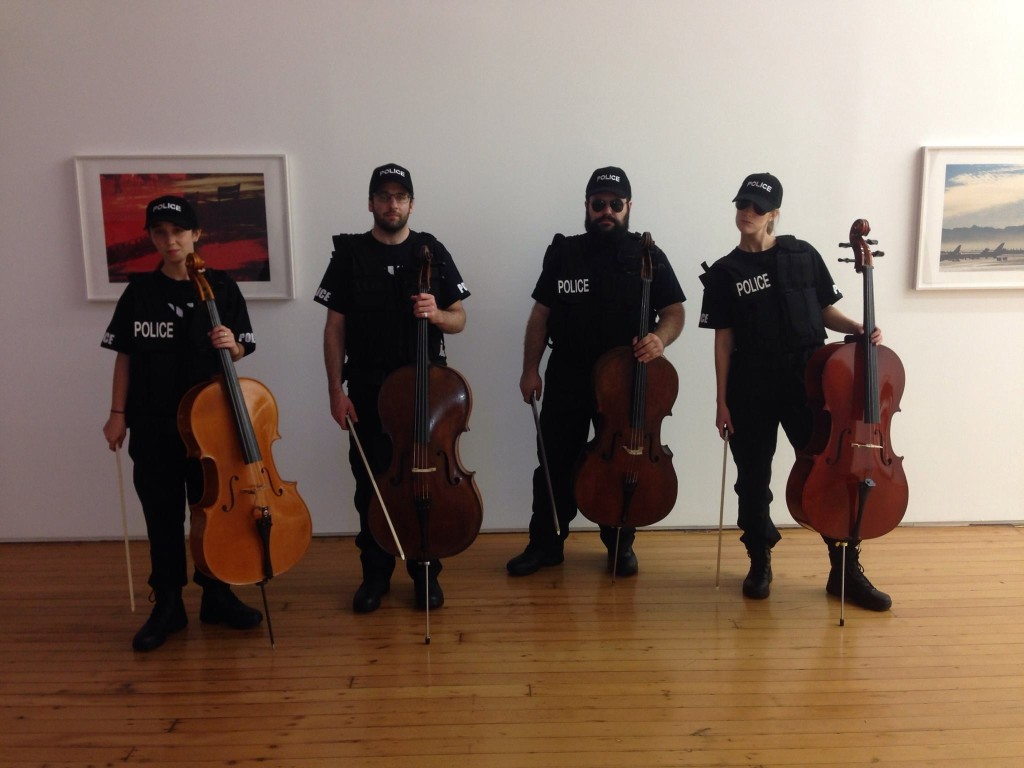
Ferraro’s domain of absurdity can be somewhat opaque, if not completely indecipherable. Much of his more recent corporate muzak contrasts with his earlier tape work with The Skaters, where odd ecologies of loops are built toward random cacophonies, or simply droned along until their point of expiration. Since then, he’s ditched the rawness of analogue audio and produced under the monikers Bebetune$ and Bodyguard, as well as eponymously, morphing into a more recent phase riffing directly off of banal commercial MIDI arrangements. ‘Burning Prius’ is unique amongst the pile of silica gel, iguanas, Dubai and the other references that Ferraro brings into his work, extending his focus onto an overlap between digital and classical arrangements, as well as opening up his work to performative composition.
On January 29, Ferraro is hidden amongst the crowd, acknowledged by a few close friends but largely clandestine. About fifteen minutes past 9pm a quartet of cellists in SWAT gear walk into the dull roar of conversation and take their places as a soundtrack of police sirens, surveillance helicopters and diffuse traffic patterns begin to roll off the speakers. Beginning with a police blotter and then proceeding into annunciations by a talking Prius computer, the performance builds up with the background drone for some minutes before the cellists play their first note. The sounds are angular, distinct and sharp, acting as punctuation as the babble of the cold, synthesized hybrid car voice recites phrases like ‘Destination’, ‘Traffic’ and ‘Los Angeles’. This uneasy pattern between the cellists and the Prius continues until the droning background Angeleno street ambience grows precipitously more unruly, leading to a crescendo that tastefully unifies the three strains of sound. Only the Prius is left audible at the end of the performance, naively and incessantly requesting destination input.
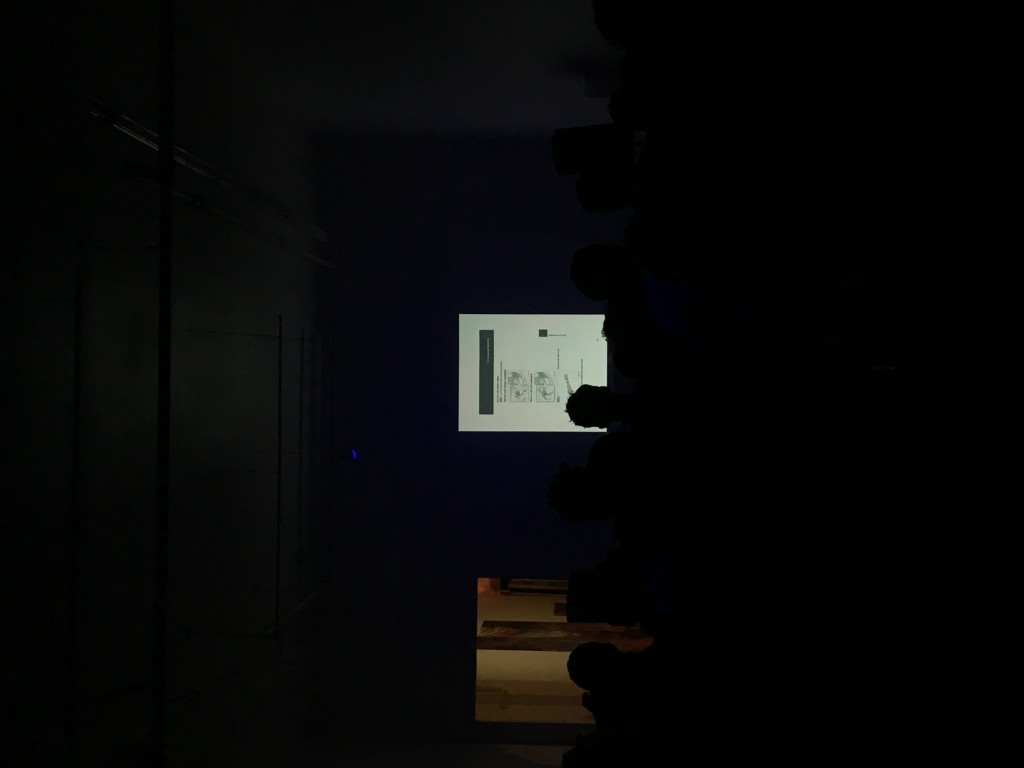
Ferraro’s performance obviously points toward the early ‘90s post-Rodney King tumult where both Los Angeles’ society and ecology were in crisis. Entire neighborhoods erupted over myriad social and economic inequities, followed two years later by the Northridge earthquake, all of which was then quite figuratively echoed by Hollywood’s depiction of volcanoes emerging out of the La Brea tar pits. As Mike Davis concludes of LA’s urban cauldron in Ecology of Fear, “Seen from space, the city that once hallucinated itself as an endless future without natural limits or social constraints now dazzles observers with the eerie beauty of an erupting volcano.” With Ferraro’s performance, this discord is reimagined, forcefully folded into the greater narrative of LA’s zenned-out lifestyle.
The hybrid link between society and ecology in Los Angeles encapsulates the very real day to day ubiquity of green juices, affirmation classes and tantric meditation overlaid with evening sunset Instagram filters. Ferraro’s method over the past few years has been to pick and choose from these varying lifestyle signifiers and present them raw, unfiltered and frustratingly naked. In a similar vein as Parker Ito’s painting, where torrents of symbols and internet imagery are spread across canvases with sprawling, complex layering, Ferraro’s nonlinearity presents social and consumerist signifiers absent of any comprehension. Ito characterized his work in Artforum as “like when people who don’t read Chinese get Chinese characters tattooed on their bodies”. Ferraro, too, doesn’t care about recontextualization. Instead he bankrupts his constituent symbols of any real narrative and, in the case of ‘Burning Prius’, shoves them all together in the foundry of Los Angeles’ ever-confused and displaced human and natural ecologies. **
James Ferraro’s ‘Burning Prius’ was performed at LA’s Château Shatto on January 29, 2016.
Header image: James Ferraro, ‘Burning Prius’ (2016). Performance view. Courtesy Château Shatto, Los Angeles.
share news item

